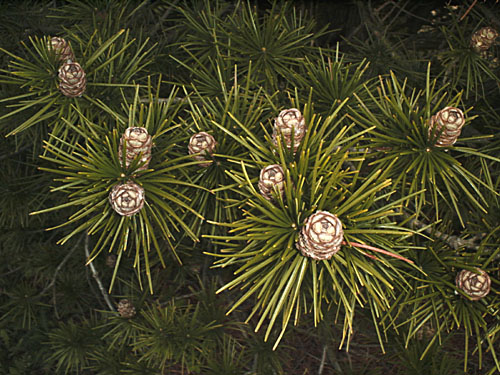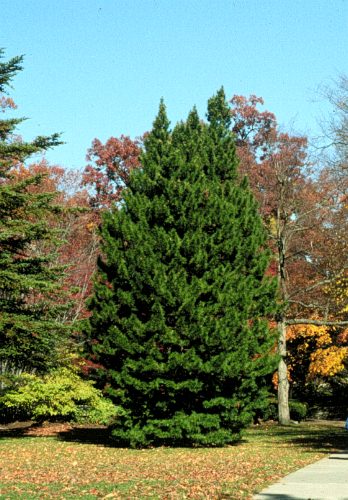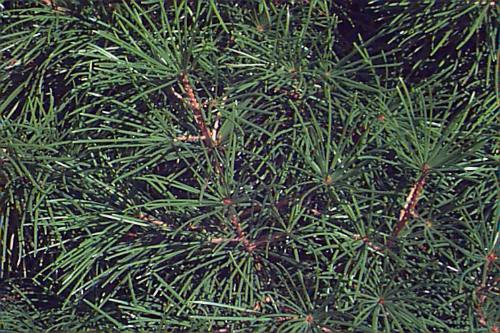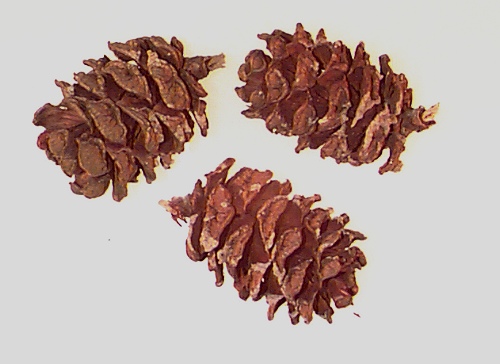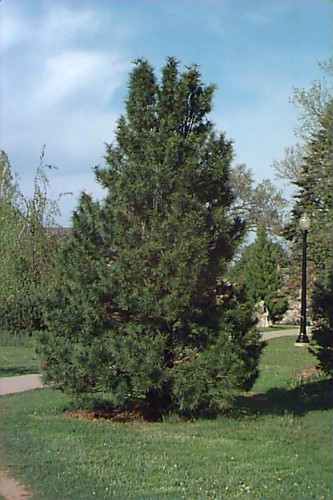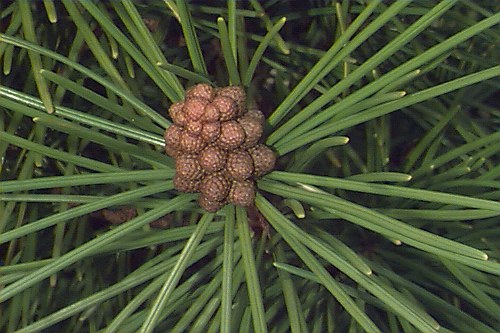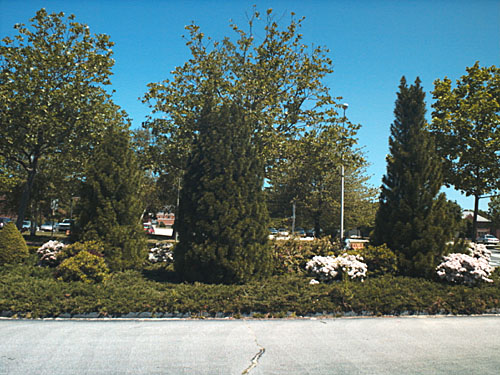Sciadopitys verticillata
Umbrella Pine, Japanese Umbrella Pine
Pinaceae
ExpandHabitat
- native to Japan
- zone 5, possibly 4
Habit and Form
- evergreen, coniferous, small to medium-sized tree
- dense and compact when young
- becomes more open and loose with age conical shape overall
- can vary from broadly pyramidal to almost spire-like
- many trees have multiple-trunks
- slow-growing, but long lived
- 25' to 40' tall and 15 to 20' wide
Summer Foliage
- leaves are evergreen
- leaves are of 2 kinds
- large linear leaves are in terminal whorls of 20 to 30
- large leaves are 2" to 5" long and somewhat flattened
- small scale-like leaves are distributed around the shoot below each whorl of needles
- large needles are dark green and glossy
- needles persist 3 years
Autumn Foliage
- evergreen, so no fall color
Flowers
- monoecious with male and female flowers
- female flowers are solitary at the ends of branches
- male flowers are in 1" terminal clusters that are readily visible in spring
Fruit
- 2" to 4" long cones, about 1" to 2" wide
- cone scales are thick and chunky-looking
- green cones turn brown at maturity
- young trees rarely fruit
Bark
- reddish-brown, exfoliating in shreds or strips
- quite attractive, but generally hidden from view by the dense foliage
Culture
- rich, moist acidic soils are best
- avoid difficult sites with sweeping winter winds
- full sun is required
Landscape Use
- primary as a specimen
- lawn tree
- for decoration
- as an accent
- rock gardens
- conifer gardens
- for something unusual
Liabilities
- uncommon and expensive to purchase
- slow-growing
- potential wind burn in exposed, cold sites
- dense foliage makes them somewhat susceptible to snow and ice damage
ID Features
- whorls of large, flattened needles
- symmetrical, dense growth habit
- generally easy to identify because of its distinct appearance
- cones have thick scales
Propagation
- by seed
- dormant season cuttings can be rooted, but rooting is slow
Cultivars/Varieties
'Aurea', 'Ossorio Gold' and 'Ann Haddow' - Unusual for their golden yellow needles, these forms are very rare and prized by collectors.
'Jim Cross' - Named in honor of the late Long Island nurseryman, this unusual form grows slowly and densely to 10' tall after many years.
'Joe Kozey' - This Sidney Waxman introduction from the University of Connecticut maintains a columnar habit with healthy green needles.
'Pendula' - This enigmatic form is rarely offered, but is very unusual due to its weeping branches.
'Variegata' - The needles of this hard-to-find variation are colored green and yellow.
'Wintergreen' - Perhaps the finest form, this plant features a narrow conical habit and bright green foliage that does not discolor in winter. The plant grows slowly and often looks so pristine that one could mistake it for plastic. It was developed by Sidney Waxman of the University of Connecticut.
